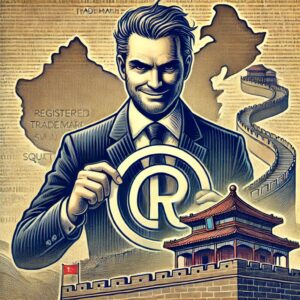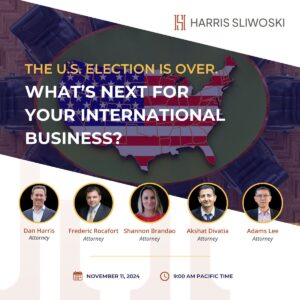The United States and China are scheduled to have a grand signing ceremony on January 15 for the “Phase One” deal that is supposed to solve the U.S.-China trade war. Though more than 200 guests have been invited to attend the ceremony, no one knows exactly what they will be signing because the text of the “Phase One” deal has not yet been released. Fox Business news reported that a U.S. trade source said the Phase One deal text will be posted on the website of the U.S. Trade Representative the “moment” the agreement is signed on Wednesday.
Treasury Secretary Steve Mnuchin has dismissed “rumors” that China’s commitments in the deal had been changed in translation. Of course, since no one has seen either the English or Chinese versions of any drafts of the deal, it is impossible to do a side-by-side comparison to see if the English and Chinese versions are consistent or what, if any, changes were made from prior drafts, also undisclosed. There is though a very significant possibility the Chinese version will not be entirely consistent with the U.S. English version and the Chinese will think they have agreed to something different from what President Trump and his team believe they have agreed to.
The Trump Administration’s cavalier attitude that the Chinese translation of what is reported to be an 86-page English version of the deal is just a minor technical matter is a bit shocking. In general, if treaties and other international agreements are authenticated in two or more languages, the text is equally authoritative in each language, unless specifically provided that one language will prevail over the other. It seems likely that the Chinese side will insist that the Chinese language version be considered equally authoritative as the English version.
We consistently advise our clients on the critical importance of having a reliable Chinese translation of any contract or agreement. This is because my law firm constantly gets approached by American and European companies that wrongly believe they had a “deal” with a Chinese company and that we, the lawyers, were there “merely to document the deal.” However, once we lawyers get a hold of the “deal” document we discover at least one of the following problems:
- There is no way the Chinese company would agree to one or more of the provisions and either it did not (and the foreign company is mistaken) or it did, but it does not understand to what it has agreed.
- There are one or more things about the deal that are bad for both sides and both sides would benefit by changing those.
- There are one or more things that are illegal, completely unworkable or nonsensical in one or both countries.
Getting consistency between the Chinese and English versions of any agreement is a big deal. We have seen our share of translation disasters over the years. We have seen contract terms with “must” translated into Chinese as “may.” We have seen English language contracts referring to “A,” while the Chinese language versions of those same contracts referred to “not A.” The Chinese language contract then noted the Chinese language version would control in any dispute. So even though the U.S. company believed it had signed a contract saying “A,” it had actually signed a binding contract saying “not A.” See China Agreements. Why Ours Are In Chinese. Flat Out.
Many dual language Chinese-English contracts are silent on which language controls, and far too often foreign companies just assume that the English language portion controls or they just assume that it does not matter because the meaning of both the English and the Chinese portions is exactly the same. WRONG.
If both languages in a dual language contract say the same one language controls, that one language will control. So if both the English language and the Chinese language portions say the Chinese language portion controls, the Chinese language portion will control. Similarly, if both the Chinese language and the English language portions say the English language portion controls, the English language portion will control. No problems there.
It is everything else that so often causes problems for American and European and Australian companies.
You see, if both your English language and your Chinese language portions are silent as to which language controls, the Chinese language portion will control in Chinese courts and in China arbitrations. In real life this means that if the English language portion of your joint venture contract says that you get 20 percent of the joint venture’s revenue but the Chinese portion says you get 20 percent of the profits (which will of course be way less than revenues) you will have no legal basis for claiming anything more than 20 percent of the profits. Our China lawyers see this sort of intentional discrepancy all the time.
Of the hundreds of dual language contracts proposed by Chinese companies and reviewed by our China attorneys, we’ve never seen a single one where the Chinese portion was less favorable to the Chinese company than the English portion. But we’ve seen plenty where the Chinese language portion is better or much better for the Chinese company than the English portion. Chinese companies love using contracts with an English portion more favorable to the foreign company than the Chinese portion and then relying on the English speaking company to assume the English language portion will control.
But what if the English language portion explicitly states that it will control? This works right? Not necessarily. If the Chinese language portion also explicitly states that it will control, the Chinese language portion will control under Chinese law. If the Chinese language portion is silent or says that the English language portion controls, the English language portion will control.
As we noted in China Contracts: Make Them Enforceable Or Don’t Bother, it usually makes sense to draft contracts with Chinese companies in Chinese with an English language translation. But this also requires that if the contract is going to be enforced in China (as should usually be the case), you must be certain that you know exactly what the Chinese language portion of that contract actually says. No matter what the English language portion of your contract says, it behooves you to know exactly what the Chinese language portion says as well. This necessarily requires that you be 100% certain that whomever is dong the translations is truly on your side.
International trade agreements are highly complex agreements, and hopefully the United States is not going to make the mistake of underestimating the importance of knowing exactly what it is the Chinese language version of the agreement says. Now let me tell you about another very common trick Chinese companies employ with their contracts. This one is called the deadline trap and we described this in China Contracts: The Deadline Trap:
The standard program Chinese companies use for manipulating a deadline usually works in three stages, as follows:
Stage One: The first draft of the contract is always submitted by the foreign party. The Chinese company never provides the first draft because that would require they “tip their hand.” The foreign party works overtime on a tight timeline and provides its draft thirty days before the deadline. This is done under the assumption that thirty days is sufficient to work out all the deal issues and arrive at a final draft agreement on the deadline date.
The foreign party hears nothing, not even an acknowledgment of receipt. This causes concern and after three or four days the foreign party asks the Chinese side about receipt and comments. The Chinese side responds that it did a quick review and everything looks okay. The foreign party is relieved and begins preparing to implement the project on the terms stated in the draft contract.
Stage Two: Seven or so days before the deadline, the Chinese side finally sends its comments on the draft agreement. At this stage, the Chinese side proposes two or three changes. However, these changes are designed to make the contract completely unenforceable against the Chinese side. Here are my three current favorites:
1. The key to the contract is that the obligations provided in the contract are absolutely binding on the Chinese party for a period of three to five years. The Chinese side makes no revision to the 35-page contract. Instead, they insert a single article that provides that the Chinese side can terminate the contract at will on 30-days notice.
When challenged, the Chinese side claims mutual termination is common in international contracts.
2. The Chinese side adds what it calls a force majeure provision. The standard force majeure provision provides that neither side can be compelled to perform in situations where performance is impossible due to matters outside the control of that party: war, strike, typhoon, or earthquake. The key to a standard force majeure provision is that neither party is required to perform. If the force majeure condition continues, the affected party is required to return the matter to the pre-contract status quo.
The Chinese provision is always written in a way that stands the standard force majeure provision upside down. In the Chinese version, the Chinese side is concerned only with the actions of the Chinese government. The Chinese force majeure provision will provide that if the Chinese government or its agents (foreign exchange bank) makes performance by the Chinese side impossible, the Chinese side is not obligated to perform. But the foreign party is still obligated to perform and the Chinese side is not obligated to return the matter to its pre-contract status quo.
When challenged, the Chinese side replies: force majeure provisions are standard in international contracts.
3. In the critical provisions of the contract, in every place where it says “the Chinese party shall be obligated to do” the contract is revised to say “shall not be obligated to.” This is usually done where the revisions are not redlined or otherwise identified in a cover memorandum. The added word is only located after careful review of the contact. The longer and more detailed the contract, the more difficult it is to find this kind of revision.
When challenged, the Chinese side replies: we only inserted one word. What is your problem with that?
When the foreign side objects, the Chinese side will complain that the foreign side is being unreasonable. If well advised the foreign side will hold the line and refuse to agree to revisions like these that will essentially render the contract meaningless. The Chinese side then agrees to back down and the foreign side then feels relieved, assuming the agreement as drafted will be executed on or before the deadline. The unsuspecting foreign party does not realize that the opposite will almost certainly happen, leading to stage three.
Stage Three: Two to four days before the deadline, the Chinese side returns the contract with extensive revisions throughout the entire document, usually with no redline of the revisions. Some Chinese parties will redline some but fail to redline others. No explanation is ever given for the large number of revisions. No explanation is ever given for why these revisions were provided so close before the deadline when it is clear the Chinese side was aware of the issues weeks earlier when the draft was first provided to it.
Most foreign parties at this stage fall directly into the trap laid by the Chinese side since day one. The foreign party works desperately to revise the document in the face of the by now ridiculously short deadline. In this setting, the Chinese side is hoping two things will happen. First, the foreign side will make concessions just to get the document signed. Second, the foreign side will make drafting mistakes due to the short timeline and the need to work in two or more languages. The Chinese side will then ruthlessly take advantage of those mistakes at a later date.
It is always a mistake to fall into the deadline trap. The better response is to realize from the start that the deadline is not relevant to the Chinese side. The Chinese side is merely using the deadline as a tool to gain an advantage over you. The first step when faced with this trap is to refuse to make the revisions and execute the agreement under this time pressure. Instead, tell the Chinese side that since they are the ones who responded late, you view their response as a contract rejection and for this reason, the deal is off.
Then simply walk away. Do not propose a new deadline. If you propose a new deadline, the Chinese side will go through exactly the same steps (as above) in almost exactly the same way. The only useful course of action is to tell the Chinese side that if it is still interested in doing the deal it should come back with a reasonable set of proposals, and if we are still interested, we will take a look. But, since the deadline has passed, we may never come back to you. It is your risk.
In that situation, some Chinese parties will simply capitulate and come back with a reasonable set of proposals quite soon, often within one week. However, the most common response is that the Chinese side will continue to act in a manner designed to force the foreign party into making an unreasonable concession or a mistake. The only way to prevent that is to treat the deadline as a hard date and to walk away when the Chinese side is unreasonable.
It is impossible to predict what the Chinese side will do when you walk away. The Chinese side is not using this three-stage technique because it is inexperienced. The opposite is true. These entities are very experienced and they have learned that the deadline manipulation technique works very well. The only appropriate response from the foreign side is to call the bluff by walking away. But like a poker game with a stranger, you never know what will happen when you call the bluff. The response from the Chinese side is entirely unpredictable.
Be prepared.
It is worth noting that the Chinese are being incredibly quiet about the terms of the “phase one” deal. The Chinese have said little to nothing about what they are buying, how much they are buying, whether they are buying or promising to buy, etc. Indeed, the Chinese specifically noted to reporters that it had not released any details of the “phase one” deal because the U.S. side had switched positions repeatedly on numerous issues.
China is no doubt playing the long game. Who knows what a “phase two” deal will look like, when we don’t even know what is in the “phase one” deal we are signing? One month between the announcement and the signing of the deal seems like a very tight window to take care of all the millions of little but necessary details that go into an agreement. It would not be surprising if the Chinese side is planning to take advantage of President Trump’s absolute commitment to have a grand deal signing ceremony on January 15 (tomorrow!) to sneak in some last-minute tweaks in the Chinese language version of the deal that may or may not be 100% consistent with the English language version, just as we’ve seen so many times in our own, much smaller and less globally important deals.
I guess we’ll just have to wait and see the agreement when it actually gets released after it is signed and too late to change anything. Hopefully, there won’t be too many provisions that wind up with inconsistent translations with significant impact, and hopefully any inconsistencies can be cleaned up in later negotiations. But hoping that a “phase two” deal will take care of any inconsistencies or gaps in the “phase one” deal is like hoping to build a house on a foundation of shifting sand. Rather than resolve the U.S.-China trade wars, this “phase one” deal likely will have some snap back provisions that, together with some inconsistent Chinese language translations, will result in a resumption of U.S.-China trade disputes in some form or another in the not too distant future.
























